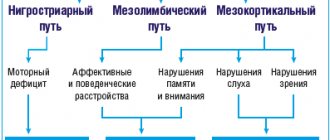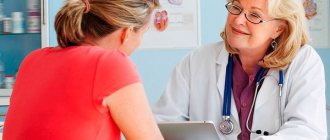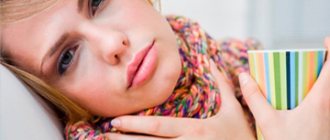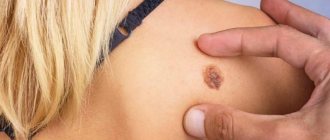The information was prepared and checked by: Obstetrician-gynecologist, ultrasound specialist Zheleznaya Tatyana Mikhailovna
In childhood and adolescence, many observed small, rough growths on their hands - warts - and did not attach much importance to them if they did not interfere, choosing the skin of the palms, feet or the inner surface of the contacting parts of the body - thighs or fingers. In most cases, they disappeared on their own with puberty and did not require special treatment. Few people knew that warts and genital warts are much more dangerous than they think. Their occurrence is provoked by HPV - human papillomavirus. Its danger lies in the disruption of the genome of healthy cells, which is associated with the development of cancer. To reduce the risk, an HPV vaccine is given, which reduces the likelihood of infection several times.
What diseases are caused by the human papillomavirus?
An external visual manifestation of the penetration of the virus into the human body is the formation of pointed papillomas. Their favorite localization is the genital area. That is why genital papillomas are regarded as a sexually transmitted disease. It is HPV that is considered the most common infection of this type. Contact and household transmission of the virus is also possible - due to violation of hygiene rules:
- using other people's bath accessories;
- putting on someone else's underwear;
- sleeping in the same bed with a person infected with HPV or who is a carrier of it.
Having appeared in the human body, the virus can provoke the development of cancer of the cervix, vulva, vagina, and anus in women, and cause cancer of the head of the penis or carcinoma of the anus in men. The most common HPV-associated complication is cervical cancer, which can be considered a serious social problem. After all, sick young women face a significant deterioration in health, disability, and decreased fertility.
Where does cancer come from?
There are several theories about the causes of cancer: exposure to carcinogenic substances, the influence of certain viruses, and hereditary predisposition.
The outstanding Russian scientist L.A. Zilber, who already in 1935 formulated the principles of virology and immunology of cancer, is deservedly considered one of the discoverers of the role of viruses in the development of cancer. In subsequent years, foreign and domestic scientists confirmed the important role of viruses in the process of carcinogenesis.
A more detailed study of the role of viruses in the development of cancer at the end of the 20th century. marked the beginning of the development of vaccines against cancer. The invention and mass use of a vaccine for the prevention of hepatitis B is generally recognized as the first success in this area. In addition to preventing the infectious disease itself, vaccination prevents cirrhosis and primary liver cancer. Over 30 years of vaccination, including the mass use of this vaccine since 1997, hundreds of thousands of human lives have been saved and extended in Russia.
The second significant success of scientists was the discovery of the connection between the human papillomavirus (HPV) and the development of cervical cancer (CC). For the discovery of this connection, Harold zur Hausen received the Nobel Prize in 2008. Later, the role of HPV in the development of cancer of a number of other organs was revealed.
What is the human papillomavirus vaccine?
A large number of varieties (strains) of HPV have been discovered that can cause the development of diseases. Their prevalence varies across countries and regions. Some are less common, but more dangerous in terms of provoking cancer (types 16 and 18), others are relatively safe in this regard (types 9 and 11), but are quite widespread. Since it is impossible to predict which strain of virus will enter the body through sexual contact, the vaccines include protein shells of several strains. That is, all HPV vaccinations are polyvalent - developing immunity to several modifications of the infection simultaneously. The principle of the effect of the papilloma virus vaccine on humans is the same as all other vaccines. A small amount of artificially created protein components that make up the outer shell of viruses is introduced into the body by intramuscular injection. The vaccine does not contain the genome of the virus that causes cell malfunction. Therefore, it is completely safe. The human papillomavirus affects both men and women, but in the latter, papillomas on the genitals appear several times more often, and if they do appear, they contribute to the development of cancer. In men, cancer caused by HPV is rare. That is why in Russia, mainly females are vaccinated - girls and young women before active sexual activity or adults who have never had genital carcinomas, but have an increased risk of infection as a result of sexual contacts with a new sexual partner. partner.
Principles and purposes of vaccination
The main purpose of vaccination is to reduce the likelihood of infection. Antibodies produced in the human body after vaccination actively destroy the invading virus. Immunity is maintained for at least five years, that is, during the period when girls begin sexual activity and reduces the risk of infection. During this time, the body naturally has time to develop a defense mechanism. Therefore, after the vaccine expires, re-vaccination is not carried out. Typically, adolescent girls are immunized at the age of 11-26, provided that they have not had contact with a carrier of the virus and are not infected with HPV. For infected people, vaccination is completely useless, since the virus has already penetrated the cells, introduced its own DNA into their genome system and began the active assembly of new viral particles. Immunization and developed immunity are effective only at the stage of virus penetration into the body - in this case, antibodies destroy the protein shell virus and kill it. Vaccinations are powerless against a new, actively building virus that has penetrated into the cell and genetic apparatus.
What types of HPV and consequences does it protect against?
The most dangerous are four types (strains) of the human papillomavirus, numbered: 6, 11, 16, 18. The Gardasil vaccine has been developed to protect against them. Considering that by the beginning of the 21st century, more than 140 varieties (strains) of viruses are known that cause the development of warts, condylomas, keratoses and other similar skin changes, the range of effects of vaccines is extremely narrow. In addition, not all existing vaccines contain the protein shells of all four listed strains. The most polyvalent vaccine is Gardasil-9. It contains antigens of nine different strains of the virus: 6, 11, 16, 18, 31, 33, 45, 52, 58. It has been established that cancerous degeneration of cells most often occurs when the body is affected by strains 16 and 18. Therefore, vaccines were developed developing immunity specifically against them. Despite the narrowing of the range of protection, immunity is more stable, and the activity of the antibodies produced is significantly higher. These vaccines include Cervarix, which protects specifically against HPV serotypes 16 and 18.
Does an already infected person need a vaccine against papillomavirus?
The disease is an absolute contraindication for HPV vaccination. This is due to the fact that the vaccine is not an immunoglobulin. It does not contain artificial antigens that can destroy the viral envelope. As mentioned above, the virus genome that has entered the cell becomes inaccessible to the cells responsible for human immunity - leukocytes, phagocytes and other types of white blood cells. Therefore, vaccination against HPV in the presence of the virus in the body does not stimulate the development of immunity and is completely useless.
Who is recommended for vaccination against HPV infection?
In recent years, HPV vaccines have been included in the national vaccination calendars of many countries around the world. HPV vaccination is recommended for all adolescent girls aged 12-14 years. It is early vaccination (before the onset of sexual activity) that is most effective. However, even at a later age, the vaccine has undoubted benefits. Currently, studies of the Gardasil vaccine have been completed in women under the age of 45 and in young men. Based on the results of these studies, HPV vaccines are recommended for use both in women without HPV infection and in infected patients.
Indications and contraindications
The indication for immunization is the assumption of the possibility of infection of a young person entering sexual activity from his already infected partners. The vaccination strategy is such that predominantly women are vaccinated, as they are most at risk of disease and the development of cancer complications. By vaccinating a large number of young women, the natural population of viruses (their most dangerous strains) and the risk of infection of men through contact with an immunized partner are reduced. In 62 countries, immunization against HPV is included in the national calendar. Preventive measures to combat morbidity are carried out at the expense of the state budget. In some regions where the prevalence of HPV is particularly high (Africa, Latin America, Southeast Asia), the papilloma vaccine is given to both men and women. This provision is relevant for six countries. Such actions can reduce the spread of viral infection and protect citizens from HPV-associated diseases - genital warts of the anogenital zone, respiratory papillomatosis, as well as the development of malignant tumors in the anal area, oropharynx, larynx, and so on. In Russia, there are recommendations from the Ministry of Health that prescribe immunization and boys and girls aged 12 years. The peak concentration of antibodies in the body occurs at 14-16 years old - the age at which modern teenagers begin sexual activity. According to studies conducted by a number of regional perinatal centers, three-quarters of the adolescents surveyed use barrier methods of contraception. But let this figure not “reassure”, since the majority of respondents admitted that they do not do this regularly. WHO recommendations are somewhat different from Russian ones. Experts from the international institute recommend vaccinating people of both sexes between the ages of 16 and 23 years. Apparently, officials from this organization consider the younger generation to be more chaste. The age at which vaccination is given is limited to 26 years. If by this age HPV infection has not occurred and its carcinogenic properties have not manifested itself, then every year the risk will decrease, and sexual life usually stabilizes: the number of casual partners decreases, and experience in protecting against sexually transmitted diseases is accumulated.
Vaccination during pregnancy
Vaccination against the human papillomavirus is a relatively new preventive measure. The HPV vaccine was developed and began to be widely used at the end of the 20th century, so extensive material has not yet been accumulated to analyze all the side effects of its use. Several decades of immunization indicate that the vaccine does not have any negative effects on the body of the developing fetus. It is completely harmless for pregnant women. The question is: why introduce it? Pregnancy and breastfeeding are the times of least sexual activity, and accordingly, the risk of infection is also minimal.
What HPV vaccines are there?
Currently, two vaccines against HPV have been synthesized: Cervarix, a bivalent HPV-16/18 vaccine [GlaxoSmithKline], and Gardasil, a quadrivalent HPV-16/18/6/11 vaccine [MSD]. In large multicenter studies involving tens of thousands of women aged 16 to 26 years, both vaccines were found to be nearly 100% effective in preventing disease caused by human papillomavirus types 16 and 18 (Cervarix) and types 6,11,16 and 18 (“Gardasil”). There is evidence of a possible additional protective role of these vaccines against other HPV types not included in the vaccines (so-called cross-immunity). Studies have shown immunity against primary infection with HPV types 45, 31, 33 and 52.
Vaccine options
There is little choice between vaccination options. Two polyvalent vaccines are widely used: Gardasil and Cervarix. The third polyvalent vaccine, Gardasil-9, is quite rare. The choice must be made between expanding protection against more strains. In this regard, Gardasil is preferable. Or you need to focus on the duration and durability of immunity. In this case, preference is given to Cervarix.
However, a 12-year-old patient hardly has to think seriously about which vaccine he will be given. The vaccination strategy is determined by virologists based on an analysis of the epidemic situation in the region.
Side effects of vaccination
Gardasil and Cervarix underwent clinical testing before they were approved for mass use. Their safety and effectiveness have been proven. However, the use of vaccines may cause side effects:
- pain at the injection site;
- slight redness and swelling of the skin;
- slight increase in temperature and muscle soreness;
- enlarged lymph nodes;
- cold-like symptoms.
There is no need to worry about such side effects, since they disappear on their own within 2-3 hours.
In rare cases, a serious allergic reaction may occur after receiving the HPV vaccine. In such a situation, you must immediately consult a doctor or call an ambulance. Signs of such a reaction are:
- skin rash and red spots on the skin;
- itching of the skin;
- swelling of certain parts of the body;
- labored breathing;
- weakness, dizziness.
Such side effects are rare and the vaccine is generally well tolerated. However, before immunizing children or receiving vaccinations for adults, consulting a doctor is required. If this cannot be done at your local clinic, you can contact specialized vaccination centers.
Features and scheme of vaccination
Both vaccines are administered to the patient three times. This contributes to the development of more stable immunity. The differences lie in the frequency of administration of the next dose of the vaccine. For Gardasil, an interval between injections of 2 months is used. The whole process takes six months. When immunized with Cervarix, the interval between the first and second injections is 1 month, and between the second and third – two months. The period for antibody production is 5 months.
Do I need to get tested before vaccination?
Before vaccination, patients must undergo a medical examination and undergo tests. The purpose of the medical examination is to determine the patient’s health status, identify the presence of allergic reactions to vaccine components, and determine whether the person being vaccinated is a carrier of the HPV virus. It is useless to vaccinate such patients.
Up to what age can you get vaccinated?
WHO recommendations set the vaccination limit for women at 26 years. Vaccination against HPV in women after 30 years of age is considered useless. Observations by Russian scientists have made it possible to establish positive dynamics in the treatment of genital warts and the complications caused by them in the female genital area when the vaccine is administered to sick patients under the age of 35.
Possible complications and consequences
Among the possible negative consequences of vaccinations against the human papillomavirus, absolute and relative contraindications can be identified.
- patient infection with HIV;
- individual intolerance to substances included in the vaccine;
- complicated allergy history;
- inflammatory disease in the acute phase.
It is not recommended to get the HPV vaccine for people with hemophilia and thrombocytopenia. This is a relative contraindication.
Vaccinations during pregnancy and breastfeeding
Although animal experiments have shown the safety of the HPV vaccine (its use did not lead to developmental defects or pathologies in the offspring), given the lack of such data among humans, its use in pregnant and lactating women is not recommended. In addition, for any vaccines the rule applies: immunization must be completed no later than 2 months before the planned conception of the child.
If a woman becomes pregnant during the vaccination period, her doctor must be informed. This may require more careful monitoring of the pregnancy. A woman receives her next HPV vaccine after giving birth.
Immunization during breastfeeding is also not recommended because it is unknown whether the active components of the vaccine pass through breast milk. Children whose mothers received Gardasil during lactation were more susceptible to infectious diseases affecting the respiratory system.
Vaccine effectiveness
Observations by dermatologists and oncologists prove the high effectiveness of HPV vaccinations, provided that they are given at the appropriate age and in strict accordance with the schedule.
Doctors' opinions: pros and cons
A clear position regarding this vaccination has not been formed in the medical community. Its optionality indicates that sufficient empirical material has not yet been accumulated and generalized to clearly indicate that vaccination can reduce the risk of developing cancer in women. As in most areas of the pharmaceutical industry, in the promotion of vaccines, in their advertising manufacturing companies are interested. For doctors, this is a good help in conducting business, given the cost of one dose of the vaccine.
What to do if the next vaccination date is missed?
The minimum acceptable interval between the first and second doses of the vaccine is 4 weeks, the minimum interval between the second and third doses is 12 weeks. Therefore, an accelerated vaccination schedule is sometimes allowed. If the vaccine schedule is interrupted, there is no need to start the entire series over. If vaccination is interrupted after the first dose, the second dose should be given as soon as possible and separated from the third dose by at least 12 weeks. If only the third dose is delayed, it should be given as quickly as possible. If the interval between vaccinations is violated, the vaccination course is considered completed if three doses are administered within 1 year.
Prevention and treatment of diseases associated with HPV
Human papillomavirus is a dermatological disease. Therefore, if rough formations similar to warts appear on the body or mucous membranes of the genital organs, it is necessary to consult a dermatologist, and not a therapist or surgeon. The main method of preventing human papillomavirus infections is to observe personal hygiene measures when communicating with sexual partners. It is people who are the main reservoir and source of infection. Papillomas that appear on the body are treated with ointments and antiviral drugs taken orally or administered intramuscularly.
What drugs are used to prevent HPV?
The following vaccines are used for preventive purposes:
- Cervarix, manufactured in Belgium;
- Gardasil, made in Holland.
Once in the body, they activate the immune system, which begins to synthesize specific antibodies that provide guaranteed lifelong protection of the body against the human papillomavirus. The preparations also contain aluminum hydroxide (an immune system stimulant), substances with antibacterial effects, preservatives and yeast particles.
Vaccinations are given intramuscularly in the shoulder or thigh. In order to develop stable immunity against papillomavirus, it is necessary to administer the vaccine three times. The second injection is given after one or two months after the first, and the third - after six months (permissible after 3-4 months).
What is HPV?
Human papillomavirus (HPV - Human Papillomavirus) is the common name for a group of viruses that includes more than 100 species.
There are low and high risk HPV.
In the first case, warts appear on the skin, papillomas on the hands, feet, neck, damage to the skin and mucous membranes in the genital area, but the body’s immune system usually copes with the infection.
High-risk viruses cause precancerous and cancerous changes in the cervix and external genitalia. Currently, 10–15 high-risk viruses are known. Most cases of cervical cancer (80%) are associated with viruses types 16 and 18.
How does HPV infection occur?
The source of the virus is a person who is infected with HPV. This virus is transmitted through contact of skin or mucous membranes. Some of the HPV viruses are sexually transmitted and affect the genitals of men and women.
The peak incidence occurs at a young age, when people most often have sex; there is a high chance that a person over 25 years of age already has the HPV virus or once had it.
How to determine whether a person is a carrier of the virus?
Only after laboratory analysis. Most HPV infections do not cause symptoms or outward signs.
How to understand that an infection has occurred?
Typically, HPV infection is asymptomatic, so a person may not even realize that he has it. In addition, the infection can go away on its own, but often becomes chronic.
HPV infection can be diagnosed using a Pap test - the primary screening for cervical cancer and precancerous changes. A gynecologist can also detect HPV when he sees morphological changes in the cervix.
HPV tests are not available for men.
Are only women carriers of HPV?
No. HPV is one of the most common infections in both women and men.
What happens after infection with HPV?
The peculiarity of the virus is that it penetrates the cell nucleus of the basal layer of the cervical epithelium. That is, there is no circulation of the virus in the blood, and therefore there are no symptoms of fever, weakness, or intoxication. Clinical signs of HPV (warts, condylomas) may or may not appear over time.
Did you get sick once and that’s it?
Even if the body defeats the human papillomavirus, it can become infected again. Our body does not acquire immunity to it.
How to cure HPV?
The bad news is that there is no cure for HPV. The good thing is that you can detect the presence of a disease that can be caused by a virus in time and begin treatment.
How are HPV and cervical cancer related?
Unfortunately, the connection is direct and strong. High-risk types of HPV are the main cause of the appearance and development of not only cervical cancer, but also cancer of the genital organs of women and men, as well as children. Children become infected during the passage of an HPV-infected mother through the birth canal.
How to protect yourself from HPV?
Since the disease is transmitted through intimate or sexual contact, the only option is complete abstinence from sexual activity. Let's be honest, this option is not suitable for anyone. HPV can be contracted even during a monogamous relationship if the partner has been sexually active in the past.
Using a condom reduces the risk of infection, but does not guarantee 100% protection. The virus can enter the human body from any infected area of the skin.
The best solution to avoid viral infection is vaccination. If possible, it should be done before the start of sexual activity. Vaccination does not protect against all types of HPV, but it does fight against those that cause cervical cancer.









